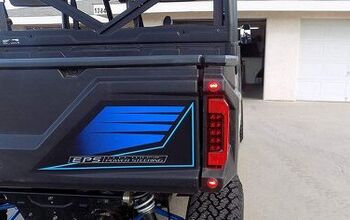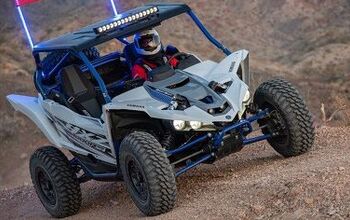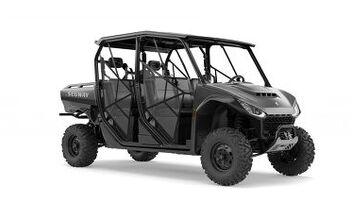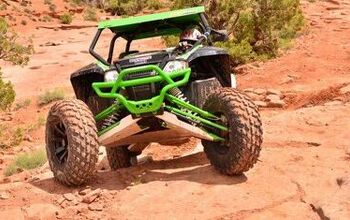2018 Polaris RZR XP Turbo EPS Dynamix Edition Review + Video
If you have followed the progression of Polaris as a company over the last 10 years, then you know that nothing should surprise you. Yet the 2018 Polaris RZR offerings are indeed surprising. With the advancements coming out of the largest manufacturer in our industry, we were blown away with the direction Polaris is looking to go. The suspension on the 2018 Polaris RZR XP Turbo EPS Dynamix Edition is revolutionary.
In the rock and sand just an hour south of Las Vegas Nevada we had a half day to get slightly familiar with the newest advancement in the RZR arsenal and it did not take long to figure out that this was a big step forward when it comes to suspension for Side-by-Sides. Here’s the big question though; will the buying public really understand what they are getting and will they embrace the fact that they will now have a computer working in their favor? We can revisit this in a moment, but let’s look at the machine first.
The Polaris RZR XP Turbo EPS Dynamix Edition features a 925cc Pro-Star engine platform with 168 horsepower. It’s not surprising as the horsepower war is in full swing in our industry, but it is actually pretty refreshing that this WAS NOT the biggest news from this company. The Turbo RZR is built on the same chassis as other RZR machines in the bloodline, using the same suspension travel, ground clearance as well as the same arms and legs. As a matter of fact, the most notable difference besides the shocks that you will see in the specs is a 21-pound weight gain as well as a new Ride Command screen on this rig that Polaris calls its Dynamix Visualizer. We are all too familiar with this baseline, but what we experienced during our ride would throw a serious curve ball into what we know as suspension control.
When you get airborne, the Dynamix Active Suspension will automatically set all four shocks to their stiffest setting so you don’t bottom out.
Enter the Dynamix Active Suspension. This single product has been the brainchild of Polaris for a few years now. Word has it that the initial conception or first seed planted by development engineers took place in 2011, but it wasn’t until a couple of years back that the green light was given to press forward and make it come to life. We know that Polaris has a great relationship with FOX shocks and the way it was explained to us at our morning briefing is that FOX would build a great shock and Polaris engineered the electronic valving control for the shock along with the computer control center to read all of the important inputs to successfully adjust the suspension on the fly.
There are seven key inputs that transfer information to the onboard computer and this computer deciphers this information at a rate of approximately 200 times a second. The information is generalized on the Ride Command Dynamix Visualizer screen so the driver can see how this system is affecting the ride. The screen shows steering wheel position as well as shock firmness on each wheel depicted on the screen. As for rider input for riding style or terrain, there are only (at least for now) three selections that would allow the driver to put the machine’s suspension into a general area for their riding style. This does not mean that the driver is in total control, but it does give you a preset shock positioning that tailors to the trails or maybe your style a bit more. Keep in mind that it is simply controlling fluid transfer and a preset spring rate with both crossover reload adjustments also taken into consideration here.
The three settings controlled by the driver are Comfort, Sport and Firm. Our guides at Zero 1 Adventure Rides in Primm, Nev. laid out a course for us to take during our short time in the RZR. As we left the home base we had the car set in comfort. This gives the trail rider or casual rider a little more comfort and softens up the suspension for expected speeds or terrain. The onboard computer is always monitoring the ride and interacts with the shocks as needed. We felt this setting was indeed comfortable, but as the pace increased it started to be a bit too soft. That’s when we clicked the switch to Sport mode.
Sport mode is a general riding setting that still gives a plush ride but is set up to adjust the shocks a little more firm and control the body roll just a bit more. This was actually our favorite setting for the day and it seemed to fit the speeds we had driven during our ride out to the Pioneer Saloon for lunch. The larger g-outs or ditches in our trail seemed to get soaked up by the suspension, making our confidence level just a bit higher with every encounter. That’s when we found a limit of sorts to the Sport setting comfort. We’re not sure the suspension actually bottomed, but it was a pretty good lick, possibly a rock or raised center in the trail. This is when we thought we would try the firm setting.
The Firm setting is really noticeable as it definitely gets very firm into corners, effectively controlling body roll as well as when you come over a rise only to find out that the trail has gone to crap in front of you. At 50 mph in slight dust with your foot on the floor, it was a “stand on it and pray” moment that was more anticipated while being less than intrusive on our comfort. We could tell the shocks took the hit for us and were very thankful.
One thing that was mentioned in the morning discussions about the suspension is a by-product of sorts being the front end firming up with just a tap on the brakes. There were many sections of the trail where a ditch or rock ledge and even just a sudden dip with a flat face on the other side could have really affected our day. By simply tapping the brake pedal the Dynamix system would stiffen or firm up the front shocks so the suspension not only wouldn’t dip down, risking the nose to grind off the front steel bumper, but it made those unexpected hits much more tolerable. Again, this simple feature became our friend at speed and when we finally got more familiar with it we found ourselves using it more and more during the ride.
We did get an opportunity to try each and every one of these settings and found that for our somewhat limited ride speed during the guided adventure as well as the comfort for driver and passenger, the Sport setting worked well for us both. We cannot explain just how we feel about this system entirely yet, but can say that this single advancement will begin to forever change the way we look at suspension in the Side-by-Side industry.
So to answer our own question from the top, we are not sure how consumers will be able to relate to this as most will never touch their suspension without Dynamix, much less with a system that controls almost every aspect of it. We would hope this would begin to help the riding public realize that you can have a more fine-tuned ride in varying terrain if you simply take the time to test with your shocks. This type of engineering marvel as well as future advancements of it may very well take the tuning right out of the hands of drivers. For us, it’s something of pure amazement and delight as it is just the start to a whole new ride experience.
Whether he is in Mexico covering the Baja 1000, building ATVs for local racers, or out enjoying the trails, Rick’s passion shows in his stories. Learning to wrench his own machines from his grandfather, Rick also has an undying appreciation for the mechanics of off-road vehicles. Do not let the dirt and mud fool you, though, as Rick also has a deep love for street cars.
More by Rick Sosebee





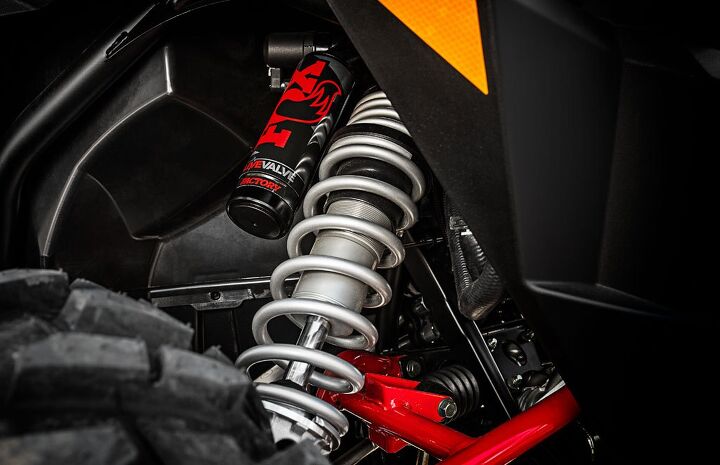











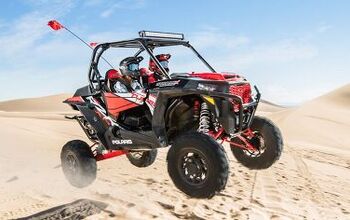

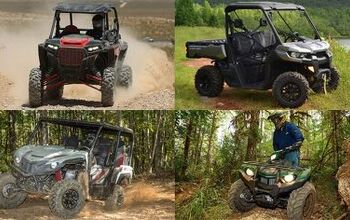

![Derek Guetter Lands 75-foot Back Flip [video]](https://cdn-fastly.atv.com/media/2022/10/24/8742829/derek-guetter-lands-75-foot-back-flip-video.jpg?size=350x220)
